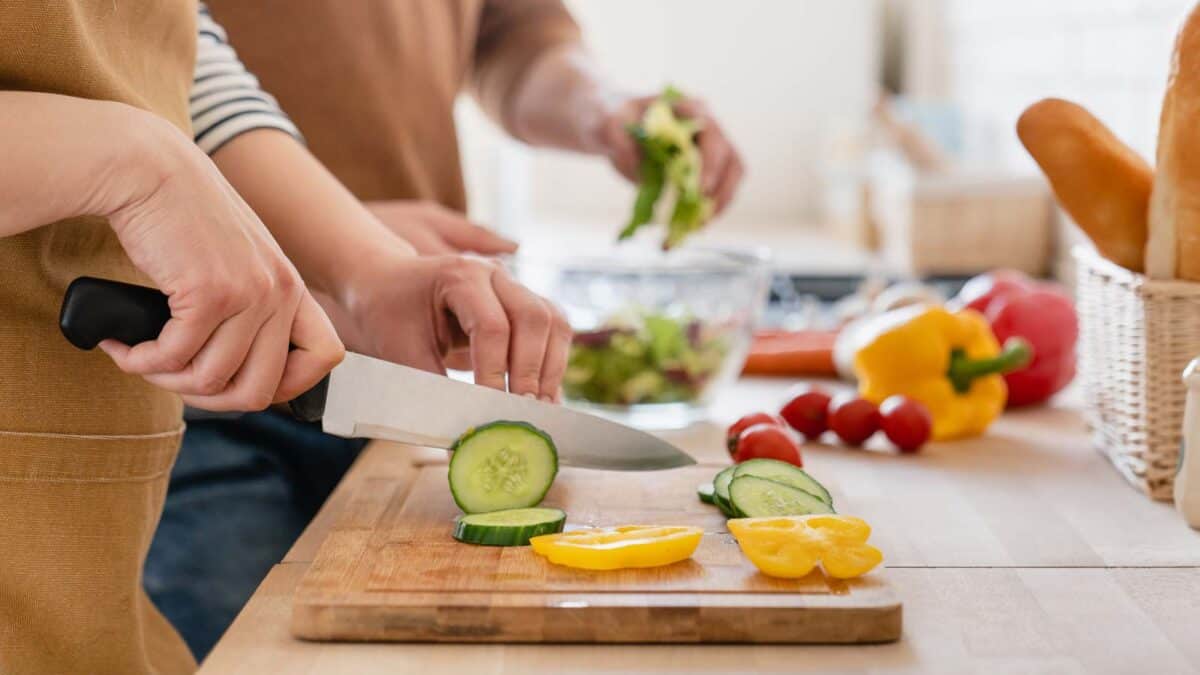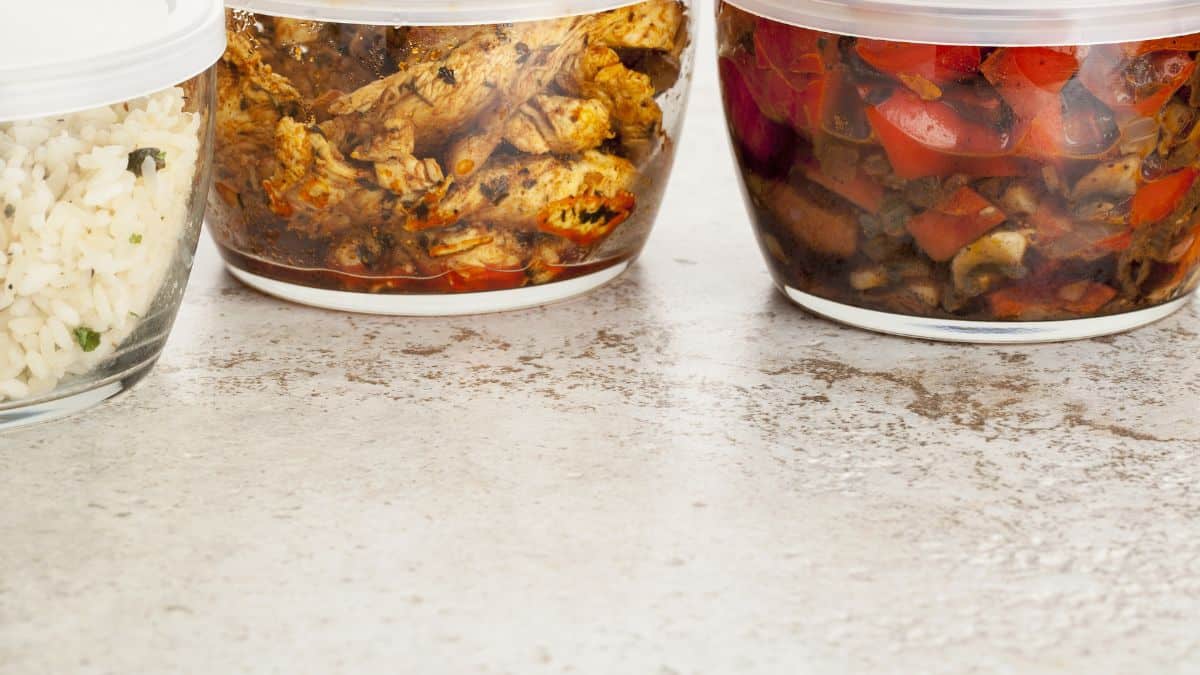Most kitchen mistakes don’t come from carelessness. They come from habits that feel normal. You prep the same way, clean the same way, cook the same way and never stop to question it. That’s where the risk builds. The problem isn’t what you’re doing on purpose. It’s what you’re not noticing.

Not Washing Your Hands

It may sound basic, but skipping hand washing is one of the easiest ways to spread bacteria in the kitchen. Touching raw meat, produce, or even your phone before handling food without washing your hands allows germs to move straight onto what you’re cooking. Washing with soap and water for at least 20 seconds before and during food prep isn’t just a formality. It’s a crucial step in preventing contamination and keeping harmful pathogens out of your meals.
Cross-Contamination

Using the same cutting board or knife for raw meat and vegetables without cleaning in between can transfer harmful bacteria. Cross-contamination happens quickly and often without notice. It’s one of the leading causes of foodborne illness, but it’s also one of the easiest problems to fix. Use separate cutting boards for raw proteins and produce, and clean all surfaces and tools thoroughly with hot, soapy water between tasks.
Undercooking Meat

Cooking meat without checking the internal temperature can leave dangerous bacteria like salmonella or E. coli alive in your food. Visual cues aren’t always reliable, especially with poultry or ground meats. A food thermometer is the best way to confirm your meat is safe to eat. For example, chicken needs to reach 165°F, and ground beef should hit 160°F. Skipping this step puts everyone at risk for serious illness.
Improper Food Storage

Leaving cooked food out for too long or storing groceries at the wrong temperature invites bacteria to grow fast. The range between 40°F and 140°F is where bacteria multiply most rapidly, often doubling in as little as 20 minutes. Perishables should go into the fridge within two hours of cooking or grocery shopping. Keep your refrigerator at or below 40°F and your freezer at 0°F to reduce the risk of spoilage and contamination.
Using Expired Ingredients

Old pantry items or questionable leftovers can seem harmless, but expired food can carry bacteria or toxins that make people sick. Checking expiration dates is important, but so is using your senses. If something smells off or looks discolored, it’s not worth the risk. A well-organized fridge and pantry help you track what needs to be used up and reduce the chances of slipping expired ingredients into your meals.
Not Cleaning Cooking Utensils Properly

A quick rinse under water doesn’t cut it when it comes to kitchen tools. Food particles left behind can harbor bacteria that transfer to the next dish you make. Every item that comes into contact with raw food should be scrubbed with hot, soapy water. Knives, tongs, mixing bowls, and cutting boards are often reused too quickly, which makes thorough cleaning between uses all the more important.
Reusing Marinades

Pouring a raw meat marinade directly onto cooked food without cooking it first is a mistake that can lead to illness. Marinades pick up bacteria from raw meat, which stick around unless the liquid is boiled. If you want to use the marinade as a sauce, make sure it reaches a rolling boil before serving. This kills any harmful bacteria and makes it safe to use with cooked food.
Ignoring Food Allergies

Even small traces of an allergen can cause serious reactions for people with food allergies. Using the same spoon or cutting board without cleaning it first can lead to accidental cross-contact. When cooking for guests or family members with allergies, it’s important to read labels, separate utensils, and be mindful of shared surfaces. These small steps help avoid accidental exposure and make your kitchen safer for everyone.
Overusing Nonstick Cookware

Nonstick pans can release chemicals when scratched or overheated, especially if they’re older or damaged. These chemicals can leach into food and may pose health risks over time. Inspect your nonstick pans regularly for signs of wear. If the coating is flaking or scratched, it’s time to replace the pan and switch to utensils that won’t damage the surface, like wood or silicone.
Using Too Much Salt and Sugar

Excess salt and sugar might not cause immediate food safety issues, but long-term overuse can contribute to health problems. Many home cooks use more than they realize, especially when trying to boost flavor in packaged or processed ingredients. Start by tasting before adding more and lean on herbs, spices, and acid to build flavor. Paying attention to these small habits can improve your cooking and keep things healthier over time.
Stay Away From These 10 Foods That Are Not as Safe as You Think

When it comes to what we eat, not everything on our plates is as safe as it appears. Despite their popularity or even the health benefits they’re touted for, some foods carry hidden risks that might surprise you. In this article, we’ll uncover ten common foods that food safety experts suggest you might want to avoid or handle with extra care. From everyday groceries to the occasional indulgence, find out what’s lurking in your kitchen that could be doing more harm than good.
Read it Here: Stay Away From These 10 Foods That Are Not as Safe as You Think
How Food Companies Are Secretly Hijacking Your Taste Buds

Ever wonder why you can’t stop munching on that bag of chips or why soda tastes so irresistible? It’s not just your lack of willpower, food companies use some pretty sneaky tactics to keep you hooked. From artificial flavors to hidden sugars, they’re experts at manipulating your taste buds to make you crave more. You’ll probably be surprised to learn just how much science and strategy goes into making your favorite snacks so addictive.
Read it Here: How Food Companies Are Secretly Hijacking Your Taste Buds
*Select images provided by Depositphotos.
Gina Matsoukas is an AP syndicated writer. She is the founder, photographer and recipe developer of Running to the Kitchen — a food website focused on providing healthy, wholesome recipes using fresh and seasonal ingredients. Her work has been featured in numerous media outlets both digital and print, including MSN, Huffington post, Buzzfeed, Women’s Health and Food Network.








